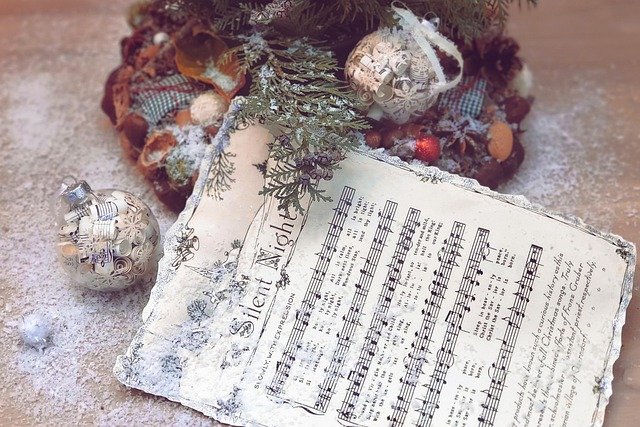Christmas Decoration with Dimensional Walls and Lighting
Seasonal holiday decor can transform a space into something memorable without overwhelming a building’s architecture. Thoughtful Christmas decoration balances scale, texture, and light so that installations feel integrated rather than tacked on. This article outlines practical approaches to incorporate dimensional wall installation, sustainable materials, architectural lighting, and mixed-media installation techniques into holiday displays for homes, offices, and public spaces.

Holiday decor foundations
Effective holiday decor starts with clear objectives: mood, audience, duration, and site constraints. For a private residence the goal may be cozy and intimate; in a public lobby it may be durable and accessible. Consider sightlines, traffic flow, and the structural limitations of walls and ceilings. Choose a consistent palette and a mix of textures—fabric, wood, metal, and foliage—to keep the scheme cohesive while allowing focal points to stand out. Practicalities such as fire safety, anchor points for hardware, and ease of assembly should guide material choices and installation methods.
Holiday decorations can be made to coexist with ongoing interior design rather than compete with it. Plan where highlights will be placed, and leave room for negative space so displays read clearly from common viewing positions.
What is a dimensional wall installation?
A dimensional wall installation is a layered, three-dimensional assembly attached to or projecting from a wall surface. For Christmas decoration this might include sculptural elements (fabric wreaths, lightweight wood cutouts, or paper stars) arranged to create depth and shadow. Such installations can be modular, allowing pieces to be rearranged or stored between seasons, or they can be semi-permanent, designed to be refreshed with new motifs annually.
When designing for dimensional wall installations, pay attention to weight distribution and mounting hardware. Use cleats, French cleats, or discrete anchor systems appropriate to the wall type. Lightweight materials make seasonal changes easier; heavier components require professional installation and may need wall reinforcement.
Choosing sustainable materials
Sustainable materials reduce environmental impact and can add authenticity to holiday decor. Consider reclaimed wood, recycled metals, natural fibers like hemp and wool, and locally sourced evergreens or preserved foliage. Biodegradable ornaments, water-based paints, and low-VOC adhesives contribute to healthier indoor air quality. Reusable fasteners and modular systems extend the life of a display and reduce waste from single-use components.
Also evaluate longevity versus biodegradability: preserved or recycled materials that last through multiple seasons may have a lower lifetime footprint than single-season disposable decor. Label materials for future reuse and design pieces for easy disassembly and storage to encourage sustainable practices.
Using architectural lighting effectively
Architectural lighting enhances dimensional effects by throwing controlled highlights and shadows across surfaces. For Christmas decoration, use layered lighting: ambient illumination for overall visibility, accent lights to emphasize focal elements, and backlighting to create silhouettes. LED fixtures are energy-efficient and offer tunable color temperatures that can shift a scene from warm and cozy to crisp and bright depending on the display’s intent.
Placement is critical—uplights reveal texture, while downlights can create pools of light that draw the eye. For wall installations, consider narrow-beam spotlights for sculptural pieces and linear LED strips concealed behind mounting planes to wash walls in soft color. Ensure fixtures are rated for intended locations and that wiring follows building codes.
Combining elements in a mixed-media installation
A mixed-media installation integrates multiple materials and techniques—textiles, metalwork, botanical elements, and lighting—into a unified composition. For Christmas decoration, juxtapose soft and hard textures (e.g., velvet ribbons paired with copper ornaments), or mix organic greens with geometric cutouts to create visual contrast. Modular panels can accept interchangeable components, letting you swap focal pieces while retaining the overall structure.
Plan transitions between materials to avoid abrupt visual breaks: use shared color accents, repeated shapes, or consistent mounting finishes as connective tissue. Pay attention to maintenance needs—some materials require periodic care (like live greens) while others need dusting or polishing—and design access points so individual elements can be serviced without dismantling the entire installation.
Installation considerations and maintenance
Large or complex Christmas decorations often require coordination with local services, building managers, or a licensed installer in your area. For temporary installations, verify fire codes, load limits, and emergency egress requirements. Create an installation checklist that includes mounting hardware, protective floor coverings, ladder and lift safety, and a plan for cable management. For displays that include electrical components, use fixtures and wiring rated for the installation type and test the system before opening to occupants.
Maintenance plans should specify cleaning schedules, bulb replacement, and a protocol for addressing damage or moisture. Store components in labeled, climate-appropriate containers to extend their lifespan and facilitate reuse in subsequent seasons.
Conclusion
Christmas decoration that combines dimensional wall installation, sustainable materials, architectural lighting, and mixed-media installation techniques can create distinctive, durable displays suited to a wide range of settings. Thoughtful planning—addressing materials, mounting, light layering, and maintenance—lets seasonal decor enhance a space without compromising safety or long-term usability. When designed with reuse and ease of service in mind, holiday installations can become a repeated source of visual interest year after year.






